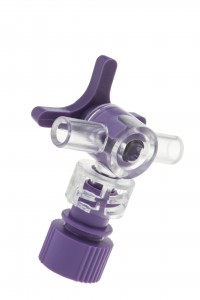
![]() Recorded Wednesday, May 11 at 10AM EDT – Presented by Eastman Chemical Company
Recorded Wednesday, May 11 at 10AM EDT – Presented by Eastman Chemical Company
Why are your connectors, stopcocks, and filtration components cracking?
Often, the culprit is the compounds flowing through the fluid management systems. This includes many drugs, lipids (including enteral feeding solutions), and carrier solvents used with major classes of oncology drugs and other types of anesthesia medications. The resulting part degradation can potentially lead to compromises in performance, product life, and safety of your drug delivery devices.
Copolyesters from Eastman have long set the standard for chemical resistance. Specifically, Eastman Tritan™ copolyesters are able to better withstand the stresses imposed by component design and environmental factors—including exposure to a variety of chemicals. Connectors made with Tritan provide outstanding compatibility with lipids, IPA, disinfectant agents, and bonding solvents.
In this webinar, we will address in detail:
• The need for chemical resistance in connectors, stopcocks, and filtration components
• How engineering polymers compare for compatibility with drugs, lipids, and carrier solvents
• How to use Tritan copolyesters in your devices to improve patient safety
Download the slides (for Prospector Members only) | Webinar Transcript
Answer these questions to download the slides.
Webinar Transcript
There are factors that can affect chemical attack, temperature as you go up. And temperature, the reactions can be more aggressive. Stress concentration of the material or the notch sensitivity of the material can come into play. Fatigue, it can also come into play on the design of the part. And the concentration and the exposure time, which is also as the main primary catalysts for what causes environment stress crack resistance. Next page.
So what we’ve done at Eastman, we’ve been looking for a number of years at this issue as the market changed. And we’ve been focused on what can we do to measure our materials against other materials that are in this market and learn from this and what is the main drivers that’s causing the chemical attack. Next slide please.
So predicting chemical resistance behavior. We have taken the current ASTM test, which is D543, which is for testing the chemical resistance. And what we’ve done, we’ve now recorded a lot of information on chemical compatibility or chemical resistance of air[SP] materials benchmarked against engineering polymers used in medical devices. There’s an ANTEC paper that was presented last year in Orlando on chemical resistance, and there’s one that goes back two, three years ago that was on residual stress. Both of these are related to some of the work that we’ve been doing internally at Eastman’s technology labs to understand the chemical resistance behaviors and materials. Next slide please.
This is a busy slide, but I wanted to go into this a little bit so I can help you explain what’s going on. We have four different materials, [inaudible 00:16:44] applied, of material. So upper left is the Tritan MX711. To the right is a lipid-resistant polycarbonate with a melt flow rate of about 6. To the lower right is a medical acrylic. It’s widely used in the medical device market. In the lower left is a medical general purpose polycarbonate with a melt flow of about 15. Next slide please.
At this point, we’re gonna launch the video to show you a time lapse photography of these parts all exposed to the same disinfectant, and they all have the same applied stress. You can see the acrylic is the first one to stress crack starting from the middle where the applied stress is. The general purpose polycarbonate is second. The upper right is the lipid-resistant polycarbonate. You can see the edge crazes that are occurring and cracking. And now you’re starting to see cracks form from the center where the applied stress is. And the Tritan in the upper left hand corner is not showing any chemical attack. All these were again exposed to Virex Tb, a common disinfectant used in the hospitals. You can go back to the slides, if you’d like. And next slide.
Download the full transcript here…
The views, opinions and technical analyses presented here are those of the author or advertiser, and are not necessarily those of ULProspector.com or UL Solutions. The appearance of this content in the UL Prospector Knowledge Center does not constitute an endorsement by UL Solutions or its affiliates.
All content is subject to copyright and may not be reproduced without prior authorization from UL Solutions or the content author.
The content has been made available for informational and educational purposes only. While the editors of this site may verify the accuracy of its content from time to time, we assume no responsibility for errors made by the author, editorial staff or any other contributor.
UL Solutions does not make any representations or warranties with respect to the accuracy, applicability, fitness or completeness of the content. UL Solutions does not warrant the performance, effectiveness or applicability of sites listed or linked to in any content.



Leave a Reply or Comment